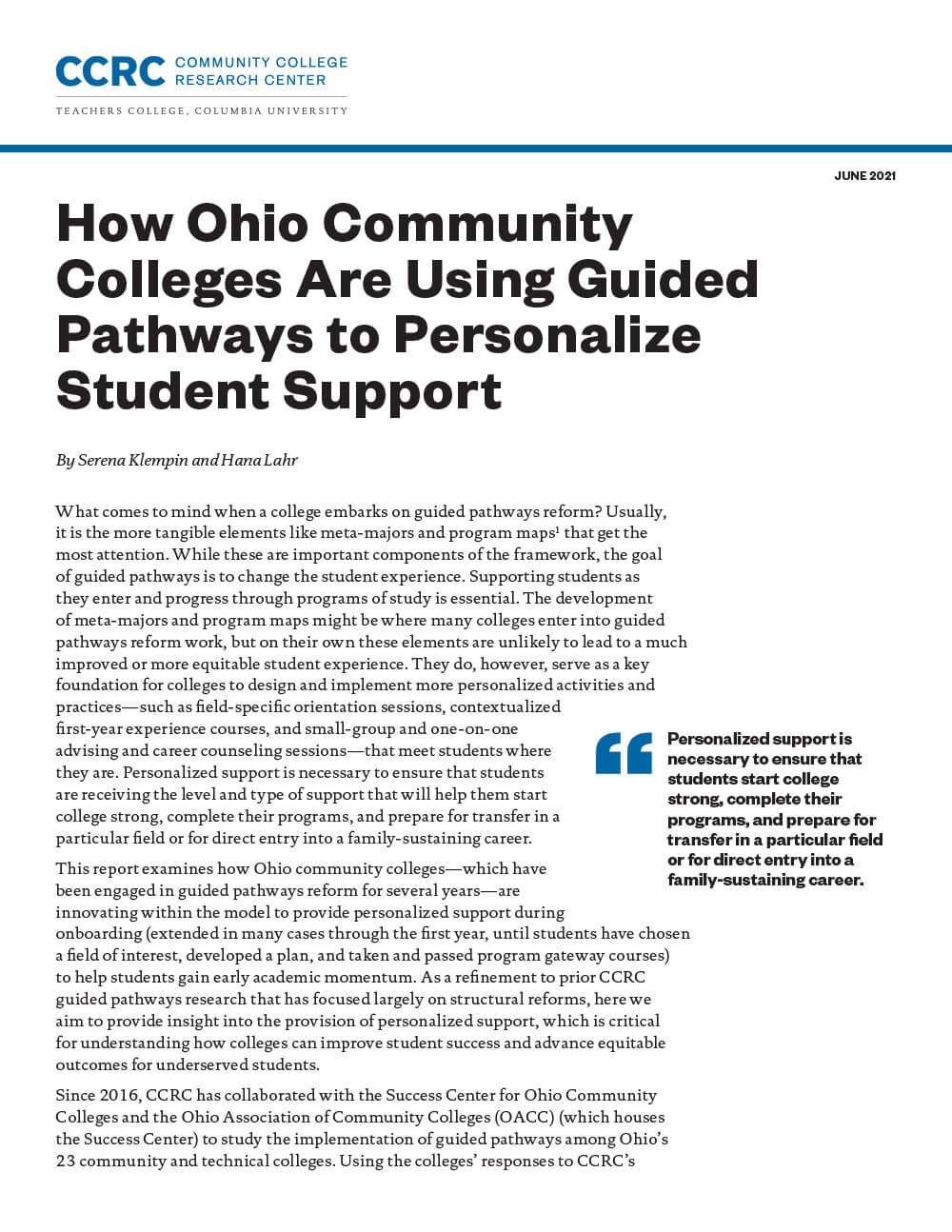
Based on responses that Ohio community colleges provided on CCRC’s Guided Pathways Scale of Adoption Assessment (SOAA) as well as on semi-structured follow-up interviews, this report examines how these colleges—which have been engaged in guided pathways reform for several years—are innovating within the model to provide personalized support during onboarding (extended in many cases through the first year, until students have chosen a field of interest, developed a plan, and taken and passed program gateway courses) to help students gain early academic momentum. As a refinement to prior CCRC guided pathways research that has focused largely on structural reforms, the authors provide insight into the provision of personalized support, which is critical for understanding how colleges can improve student success and advance equitable outcomes for underserved students.
The report finds that:
- Guided pathways reforms can promote student supports that are both universal (scaled to reach all students) and personalized (customized based on the needs and interests of groups of students as well as individual students).
- Personalizing universal supports has the potential to increase equity in student outcomes by better recognizing and meeting the needs of underserved students.
- Supports can be personalized even with limited resources.
- Personalized supports are important both for high school students (including dual enrollment and non-dual enrollment students) and for college students.
